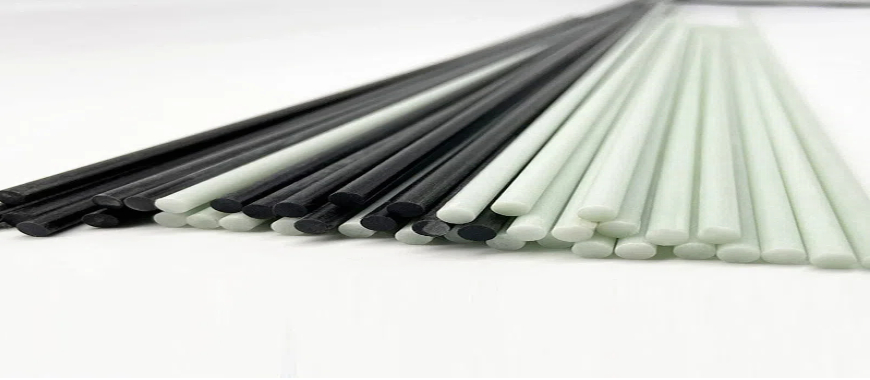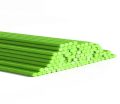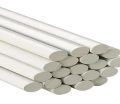
When selecting the best line for fiberglass fly rod, understanding the unique characteristics of these rods is essential. Fiberglass fly rods are celebrated for their flexibility, which enhances casting performance and provides a forgiving nature. Their slower action allows anglers greater control, especially when making delicate presentations. These rods excel in specific fishing scenarios, such as navigating small streams or targeting bass. For many anglers, fiberglass rods offer a timeless feel and unmatched precision, making them a favored choice in various fishing environments. Pairing the right fly line with these rods is crucial to maximize their potential. In this guide, we will explore the attributes of fiberglass fly rods and provide insights into choosing the best line for fiberglass fly rod.
Choosing the Best Fly Line for Fiberglass Rods
Selecting the best line for fiberglass fly rod is essential to maximize performance and enjoyment on the water. Fiberglass rods have unique characteristics that require carefully chosen fly lines to ensure optimal casting, control, and overall fishing success. In this section, we will explore key factors, benefits, and practical tips for making the best choices.
Key Characteristics of an Ideal Fly Line
Line Flexibility and Complementing Rod Action
The flexibility of a fly line is crucial when choosing the best line for fiberglass fly rod. Fiberglass rods are designed with slower action, which allows for a smooth, controlled casting experience. A flexible line complements this action, ensuring the energy from the cast transfers efficiently. This harmony between line and rod prevents excessive vibration, making it easier to present delicate flies with precision. Anglers using rigid lines may struggle with accuracy and find their rods less forgiving, highlighting the importance of flexibility in fly line selection.
Matching Weight to Rod Specifications
Fly line weight must match the rod’s specifications for optimal performance. Fiberglass rods, often available in weights like 3wt or 4wt, rely on precise line pairing to achieve balanced casting. An incorrectly weighted line can reduce casting distance and affect accuracy. Anglers targeting species such as smallmouth bass or fishing in specific conditions must prioritize this factor. Proper weight selection enhances rod performance and reduces fatigue during long fishing sessions.
The Role of Line Taper in Casting Performance
Line taper significantly impacts casting performance and presentation. A weight-forward taper can provide extra power for distance casting, while a double taper offers smooth presentations for close-range fishing. The best line for fiberglass fly rod often features tapers suited for slow-action rods, ensuring efficient energy transfer. Anglers should consider their typical fishing scenarios and match the taper accordingly to achieve the best results.
Balancing Line Choice with Fishing Needs
Different fishing scenarios call for specific fly lines. For instance, anglers targeting smallmouth bass in rivers may need a line capable of handling heavier flies. Meanwhile, those using 4wt setups in small creeks require a line offering precise control. Understanding how to balance line characteristics with fishing needs ensures the best line for fiberglass fly rod is chosen, maximizing both performance and enjoyment.
Overlining Fiberglass Rods
What is Overlining?
Overlining involves using a fly line one weight heavier than the rod’s rated weight. For example, pairing a 5wt line with a 4wt rod. This technique can significantly impact casting distance and accuracy, making it a valuable consideration when selecting the best line for fiberglass fly rod. Overlining allows the rod to load more quickly during short casts, improving accuracy in confined spaces like small streams.
Benefits of Overlining for Beginners
Beginners often benefit from overlining when learning to cast with fiberglass rods. The additional weight helps load the rod more effectively, making it easier to feel the rod’s action. This tactile feedback aids in developing proper casting techniques, resulting in smoother and more accurate presentations. Overlining can also reduce false casts, helping new anglers achieve greater efficiency.
Scenarios Where Overlining Excels
Overlining is advantageous in specific fishing scenarios. For instance, when targeting smallmouth bass with heavy streamers, an overlined rod provides the power needed for long casts and efficient turnover. Similarly, anglers fishing in windy conditions can benefit from the added weight, which stabilizes the cast and improves control. Overlining is a versatile option for adapting fiberglass rods to diverse environments and challenges.
Cane and Silk Fiberglass Fly Rod for Small Streams
Factors to Consider When Selecting the Best Line for Fiberglass Fly Rod
Choosing the best line for fiberglass fly rod involves evaluating several critical factors. These include understanding the fishing environment, identifying the targeted species, and considering how line customization can enhance performance. Let’s explore these aspects in detail.
Fishing Environment
Water Conditions and Their Impact
The fishing environment significantly affects the best line for fiberglass fly rod. Different water conditions, such as still lakes, fast rivers, or narrow streams, demand specific fly lines. In rivers with strong currents, heavier lines help maintain control and ensure precise placement of flies. Conversely, in calm lake waters, lighter lines offer delicate presentations, minimizing disturbance.
Vegetation and obstacles also influence line selection. When fishing in areas with overhanging branches or thick vegetation, shorter lines with weight-forward tapers can help navigate tight spaces. In open waters, double-taper lines are ideal for extended casts and smoother mends. Anglers must assess their fishing environment carefully to match their line choice to the conditions they’ll face.
Adapting to Seasonal Variations
Seasonal changes, such as water temperature and flow rates, further impact fly line performance. In colder conditions, choosing lines with coatings resistant to stiffness ensures smooth casting. Similarly, during warmer months, lines designed for high temperatures maintain durability and casting efficiency. Evaluating seasonal shifts is essential for selecting the best line for fiberglass fly rod in varying environments.
Targeted Species and Techniques
Bass Fishing Considerations
When targeting bass, including smallmouth bass, the best line for fiberglass fly rod should handle heavier flies and quick retrieves. Bass often dwell in deeper or vegetative areas, requiring lines with sufficient weight and strength to cast large flies accurately. Lines with aggressive tapers help turnover bulky flies, ensuring proper placement in bass-heavy zones.
Delicate Presentations for Smaller Species
For species that require finesse, such as trout in small streams, lighter lines with gradual tapers are more suitable. These lines allow for delicate presentations, reducing the chance of spooking fish. Fiberglass rods paired with the correct line excel in such scenarios, offering precision and control. Understanding the needs of targeted species helps anglers make informed decisions about the best line for fiberglass fly rod.
Line Customization and Adjustments
Creating Custom Fly Lines
Customization can greatly enhance the performance of the best line for fiberglass fly rod. Anglers may combine different taper sections to create lines tailored to their specific needs. For example, attaching a weight-forward head to a double-taper body provides the benefits of both designs, offering power and precision in a single setup.
Experimenting for Improved Performance
Experimentation is key when customizing fly lines. Testing various combinations of tapers and weights allows anglers to discover setups that suit their unique fishing styles. This approach is particularly beneficial when targeting diverse species or fishing in varying environments. By investing time in customization, anglers can ensure the best line for fiberglass fly rod enhances their fishing experience.
Broken Fiberglass Fly Rod Repair: Step-by-Step Guide
Practices for Using Best Line for Fiberglass Fly Rods
To fully optimize the best line for fiberglass fly rod, certain practices should be followed. These include precise weight matching and maintaining the line for long-term use. Ensuring proper use and care of fly lines enhances the overall fishing experience and extends the longevity of both the rod and line.
Matching Line Weight to Rod Specifications
The Importance of Accurate Weight Matching
Matching the fly line weight to your fiberglass rod’s specifications is essential for optimal performance. A fiberglass rod, especially with its slower action, relies on a properly weighted line to load and release energy effectively. A mismatched line, whether too heavy or too light, can disrupt the rod’s natural rhythm, reducing casting accuracy and efficiency.
For instance, a 4wt fiberglass rod performs best when paired with a 4wt line, as it ensures balanced energy transfer. Overlining (using a heavier line) may provide benefits in certain scenarios, such as casting heavier flies, but should be done with careful consideration of the rod’s capacity. Anglers who prioritize precise presentations, such as for small streams, should avoid underlining their rods, as it can hinder smooth casts.
Practical Considerations for Line Weight
Anglers targeting different fish species or fishing in diverse environments may need to adjust their line weight slightly. For example, when fishing for bass in dense vegetation, an overlined setup can add the required power for turning over heavier flies. However, for lighter applications like dry flies, sticking to the rod’s specified weight ensures the best line for fiberglass fly rod delivers maximum performance.
Maintenance and Longevity of Fly Lines
Proper Cleaning for Extended Use
Maintaining the best line for fiberglass fly rod involves regular cleaning. Dirt and debris accumulate on fly lines over time, especially when fishing in abrasive environments. These particles can cause friction during casting, reducing the line’s effectiveness and lifespan. Cleaning the line with mild soap and water after each trip removes contaminants and restores its performance.
Drying the line thoroughly before storage is equally important to prevent mold or mildew. Storing the line in a cool, dry place helps preserve its integrity and flexibility, ensuring it remains effective for future fishing trips.
Inspecting for Wear and Tear
Frequent use can lead to signs of wear on the fly line, such as cracks, frays, or weakened sections. These issues are more common in abrasive environments, such as rocky riverbeds or areas with heavy vegetation. Regular inspections allow anglers to identify potential problems early and avoid sudden line failure during a fishing trip.
If damage is detected, replacing the affected section or the entire line ensures consistent performance. By taking these proactive steps, anglers can maximize the life and efficiency of the best line for fiberglass fly rod, ensuring it remains reliable across multiple seasons.
How to select the best small stream fiberglass fly rod
Finding Your Best Line for Fiberglass Fly Rod
Choosing the best line for fiberglass fly rod is a journey that combines technical understanding and personal preferences. Every angler’s unique casting style, fishing habits, and target species play a role in determining the ideal fly line. By considering these aspects and experimenting with different options, anglers can maximize the performance and enjoyment of their fiberglass fly rods.
Personal Preferences Matter
Individual Casting Styles
Casting styles vary widely among anglers, and understanding your personal technique is crucial when selecting the best line for fiberglass fly rod. Some anglers prefer a slower, deliberate casting rhythm, while others rely on quicker, more aggressive movements. Fiberglass rods, known for their slower action, generally pair well with fly lines that enhance smooth and controlled casts.
Experimenting with different weights and tapers helps identify the line that complements your style. For example, a weight-forward taper may assist anglers who need to cast longer distances, while a double-taper design offers precision for close-range presentations. Each angler should explore how various lines interact with their rod to find the best setup.
Fishing Habits and Scenarios
Your typical fishing scenarios also influence the best line for fiberglass fly rod. Anglers who frequently fish in small streams might benefit from lighter lines for delicate presentations, whereas those targeting bass in deeper waters may require heavier lines to handle bulkier flies. Personal experience and experimentation are invaluable in discovering what works best for your unique needs.
The Versatility of Fiberglass Fly Rods
Advantages of Fiberglass Rods and Their Pairing with Fly Lines
Fiberglass fly rods are celebrated for their flexibility, forgiveness, and ability to handle a range of fishing situations. Their slower action enhances accuracy and makes them ideal for delicate presentations in calm waters. When paired with the best line for fiberglass fly rod, these rods deliver exceptional performance across various conditions, from small creeks to open lakes.
Selecting the right fly line amplifies these advantages, allowing anglers to cast with confidence and achieve consistent results. For example, pairing a lightweight line with a 4wt rod ensures precision for smaller species, while a heavier line can provide power for larger fish or windy conditions.
Final Thoughts on Pairing Fly Lines with Fiberglass Rods
The key to a rewarding fishing experience lies in finding the right balance between rod, line, and individual preferences. As a brand, GangLong Fiberglass values the importance of understanding these factors to help anglers make informed decisions. By choosing the best line for fiberglass fly rod, you can unlock the full potential of your equipment and enjoy the timeless appeal of fiberglass rods.
Embrace the versatility and charm of fiberglass fly rods, and invest in experimenting with fly lines to discover the perfect match for your fishing adventures. With the right combination, every cast becomes more precise, every presentation more effective, and every outing more enjoyable.
FAQs about Best Line for Fiberglass Fly Rod
The best line for a fiberglass fly rod depends on several factors, including your rod’s weight, action, and fishing environment. A line that matches your rod’s weight ensures proper loading and casting efficiency. For example, a 4wt rod should typically be paired with a 4wt line. Additionally, consider the taper design of the line. Weight-forward lines are excellent for distance and heavier flies, while double-taper lines offer better control for shorter casts and delicate presentations. Assess your fishing needs, such as targeting smallmouth bass or trout, and select a line tailored to those requirements. Experimentation can help you determine the perfect line for your unique setup.
Fiberglass fly rods are preferred for their flexibility, slower action, and ability to deliver delicate presentations. These rods excel in specific fishing scenarios, such as small streams or bass fishing, where precise control is crucial. Their forgiving nature makes them ideal for beginners and experienced anglers alike. Fiberglass rods provide a unique casting rhythm, which many anglers find more enjoyable than the faster action of graphite rods. Additionally, their durability and charm offer a timeless appeal that enhances the overall fishing experience. Pairing the best line for fiberglass fly rod ensures these rods perform at their best in any fishing environment.
The color of your fly line can influence your fishing success, depending on water conditions and fish behavior. In clear waters, a neutral or light-colored line is less likely to spook fish. For murky or turbulent waters, bright lines improve visibility for the angler without affecting fish perception. Consider the fishing environment and species you are targeting when choosing a line color. While color plays a role, selecting the best line for fiberglass fly rod is more about matching weight and taper to your rod and fishing needs.
Using a 5 weight line on a 4 weight rod, known as overlining, is possible and can provide certain benefits. Overlining allows the rod to load more quickly, which is useful for short casts or tight spaces. This setup is particularly effective when fishing with heavier flies or in windy conditions. However, overlining may reduce casting distance and alter the rod’s natural action. For optimal performance, match the line weight to the rod’s specifications. Experimentation is key to understanding how different weights affect your fishing experience with the best line for fiberglass fly rod.

As the editor of GangLong Fiberglass, I have years of experience and in-depth research, focusing on cable tray products, fiberglass solutions, and grille systems. I incorporate years of industry insights and practical experience into every content, committed to promoting the progress of the industry. At GangLong Fiberglass, my commitment is reflected in every product, from innovative cable trays to durable fiberglass solutions and sturdy grille systems. As an authoritative voice in the industry, my goal is to provide valuable information to professionals and businesses and promote forward-looking solutions.


